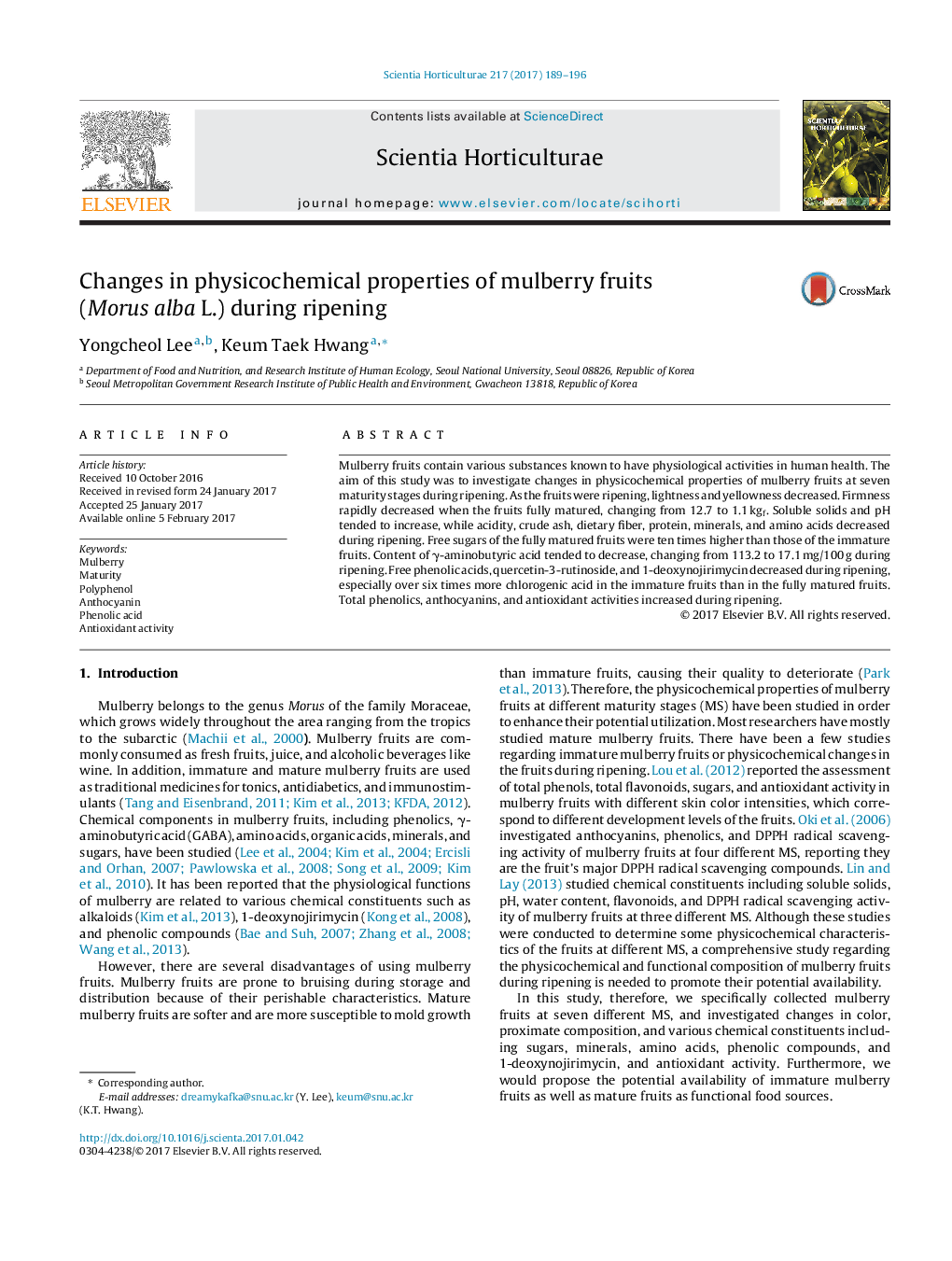| Article ID | Journal | Published Year | Pages | File Type |
|---|---|---|---|---|
| 5769690 | Scientia Horticulturae | 2017 | 8 Pages |
â¢Physicochemical properties of mulberry rapidly changed after the mid-to-late stage.â¢Mature fruits were rich in anthocyanins and showed high antioxidant activity.â¢Phenolic acids, 1-DNJ, GABA, amino acids, and minerals decreased during ripening.â¢Immature fruits had advantages in nutritional and functional composition.
Mulberry fruits contain various substances known to have physiological activities in human health. The aim of this study was to investigate changes in physicochemical properties of mulberry fruits at seven maturity stages during ripening. As the fruits were ripening, lightness and yellowness decreased. Firmness rapidly decreased when the fruits fully matured, changing from 12.7 to 1.1 kgf. Soluble solids and pH tended to increase, while acidity, crude ash, dietary fiber, protein, minerals, and amino acids decreased during ripening. Free sugars of the fully matured fruits were ten times higher than those of the immature fruits. Content of γ-aminobutyric acid tended to decrease, changing from 113.2 to 17.1 mg/100 g during ripening. Free phenolic acids, quercetin-3-rutinoside, and 1-deoxynojirimycin decreased during ripening, especially over six times more chlorogenic acid in the immature fruits than in the fully matured fruits. Total phenolics, anthocyanins, and antioxidant activities increased during ripening.
Graphical abstractDownload high-res image (211KB)Download full-size image
